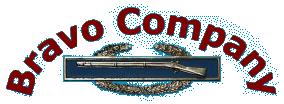

2nd Battalion, 8th Cavalry Regiment 1967-68

 |
|
 |
The Tet Offensive
|
During the first days of January, there were strong
indications that the NVA were massing four divisions to attack the US Marine
base at Khe Sanh. The enemy attack commenced on 21 January and this 66-day
siege of the Khe Sanh Base was widely considered as a major showdown between
NVA and US forces. As a consequence of this enemy threat to Khe Sanh, the 1st
Cavalry Division was given the mission to plan for the relief or
reinforcement of the Khe Sanh Base. In preparation for this contingency, the
1st Brigade deployed north to Hue-Phu Bai on 17 January, leaving
our battalion at Bong Son with the mission of turning over the
responsibility of the brigade area of operations to units of the 23rd
“Americal” Division. It had already been decided that our Battalion
Commander, LTC Stannard, would be promoted to Colonel and replace Colonel
Ratten as Commander of 1st Brigade in February.
The battle of Khe Sanh began on 21 January with massive enemy artillery barrages that destroyed most of the Marine ammunition stocks and fuel supplies. In response to the NVA attack on Khe Sanh, the 1st Brigade deployed to Quang Tri and established firebases to the south and west of the town on 25 January. On the political front, the North Vietnamese had announced in October 1967 that they would observe a seven-day cease-fire during the Tet holidays. Tet is the Vietnamese New Year celebrated during the latter part of January with a three-day festival. The South Vietnamese also decided to observe this seven-day truce.
January passed quickly for the members of Bravo Company. The Tet cease-fire
was effective on 29 January. On or about 28 January, we combat assaulted
onto a hilltop overlooking the Bong Son plain
and LZ English, and received
detailed instructions on the scope of the cease-fire, the pertinent rules of
engagement during the Tet truce and assigned the mission of providing early
warning of any enemy troop movements, with special attention to the security
of LZ English. A relaxed holiday atmosphere prevailed on our hilltop during
daylight hours as some troopers read paperback books, others played cards,
there was even a few miniature chess sets in use, and many gathered in small
groups to chat about this and that. It was business as usual at night and we
followed all of our standard procedures for night defense. However, while we
were enjoying a relaxing time on our hilltop, enemy forces were very active
violating the provisions of the Tet cease fire by deploying their units in
preparation for attacking major towns and military installations throughout
Vietnam. These enemy attacks started with attacks on Quang Tri and Hue on 31
January. Twenty-four hours later, the NVA and VC conducted simultaneous
attacks on over 100 towns and cities. These were surprise attacks and allied
forces were not prepared. As a matter of fact and taking advantage of the
conditions of the truce, most of the ARVN soldiers had received a special
seven-day leave so that they could celebrate the Tet holidays with their
families.
Units of the 23rd Division relieved us and Bravo Company moved to the airstrip at LZ English and waited several hours for the C-130 Hercules aircraft that would take us to Quang Tri. The whole company was loaded into one C-130 and we took off on a sixty-minute flight to Quang Tri. As we approached the Quang Tri area, our “nervous” Air Force pilot stated that he had problems with his instruments and could not land at Quang Tri. So we returned to LZ English and waited around for a replacement aircraft. Off again and this time we landed at Quang Tri and were met on the airstrip by our Battalion Commander, LTC Stannard. After a briefing on the enemy situation and our new mission, we loaded helicopters and combat assaulted in an area northeast of Quang Tri, close to the border between North and South Vietnam. Quang Tri City is the provincial capital for the northernmost province of South Vietnam and is located about 10 kilometers inland from the Gulf of Tonkin and 25 kilometers south of the demilitarized zone.
The mission of enemy forces in Quang Tri was to seize control of the city,
however, they appeared to be inexperienced and unfamiliar with the airmobile
tactics of the 1st Brigade. As a result of numerous air assaults
by the cavalry, these enemy forces were caught between units of the 1st
Brigade and ARVN forces and were quickly rendered ineffective. During the
evening of 31 January, the enemy commander decided to abort the attack on
Quang Tri and enemy forces started to withdraw in small groups. Quang Tri
City was cleared of the enemy by midday on 1 February and the 1st Brigade
pursued the retreating enemy forces. The enemy suffered high losses with 914
killed in action and 86 captured.
|
|||
Dropdown menu by http://www.milonic.com
http://www.milonic.com/removelink.php